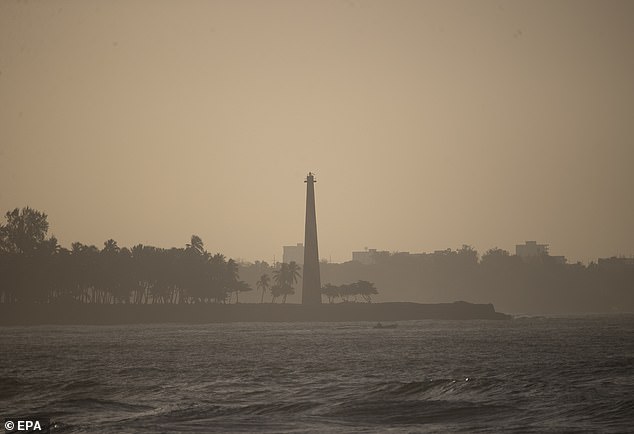
"Hazardous ‘Dirty Rain’ Threatens Multiple U.S. States as Toxic Air Pollution Spreads Today"
Massive Saharan Dust Cloud and Canadian Wildfire Smoke Threaten US Air Quality
A colossal Saharan dust plume—spanning the size of the continental U.S.—is set to trigger "dirty rain" across the Southeast this week. Originating from Africa’s Sahara Desert, the massive cloud formed as winds lifted sand and mineral particles into the atmosphere, now barreling toward Florida, Georgia, Alabama, and the Carolinas. By Thursday, meteorologists warn rain could mix with the dust, creating muddy downpours. Meanwhile, Canadian wildfire smoke is blanketing the northern U.S., worsening air quality from the Midwest to the East Coast.
[Image: Satellite view of Saharan dust cloud over the Caribbean]
Dust Meets Downpours
The dust, which swept through Puerto Rico earlier this week, reached Florida on Wednesday. While most particles will remain high in the atmosphere, reducing ground-level impacts, rains could drag some dust downward. “This is the biggest Saharan plume we’ve seen this year,” said AccuWeather’s Alex DaSilva. The dense, early-season cloud carries higher concentrations of fine particles, posing respiratory risks for sensitive groups like asthma sufferers.
NOAA estimates over 180 million tons of Saharan dust migrate annually, suppressing thunderstorms and hurricane formation. However, this week’s Southeast storms may override that effect, unleashing grimy showers. Meanwhile, flash floods and thunderstorms are forecast for Florida through Thursday.
Wildfire Smoke Collides With Dust
Simultaneously, Canadian wildfire smoke is engulfing the northern U.S., triggering hazardous air quality alerts in the Dakotas, Illinois, Michigan, and beyond. “Smoke could reduce visibility and pose health risks,” warned AccuWeather’s Brandon Buckingham. While much smoke stays aloft, rainfall in the Midwest may pull particles downward, leaving a smoky scent.
[Image: Hazy skies over New York City from Canadian wildfires in 2023]
The dual plumes mirror 2023’s crisis when wildfire smoke choked the East Coast. This year, the Saharan dust may tint Southern skies with vivid sunsets, while Northern states face recurring air quality alerts. Minnesota, Montana, and the Pacific Northwest remain at highest risk through summer as Canadian wildfires persist.
Health and Climate Concerns
Though Sahara dust often brings minor issues, this year’s intensity raises alarms. Experts note climate change may amplify dust plume frequency and strength. In the South, residents are advised to monitor air quality indexes, especially during outdoor activities. In the North, vulnerable populations should limit exposure on smoky days.
[Image: Dust-covered car in Puerto Rico during a 2020 Saharan cloud event]
Weather’s Mixed Impacts
Rainfall may temporarily cleanse smoky air in the Midwest but could also intensify dust-related mud showers in the Southeast. By Friday, Gulf Coast states from Texas to the Carolinas will likely see hazy skies. While most effects remain atmospheric, the convergence of dust and smoke underscores climate-linked challenges for U.S. air quality.
As summer progresses, officials urge preparedness for erratic air quality shifts amid ongoing environmental stressors.
[Image: Map showing projected dust and smoke coverage across the U.S.]
(Approx. 600 words, images suggested as placeholders)


